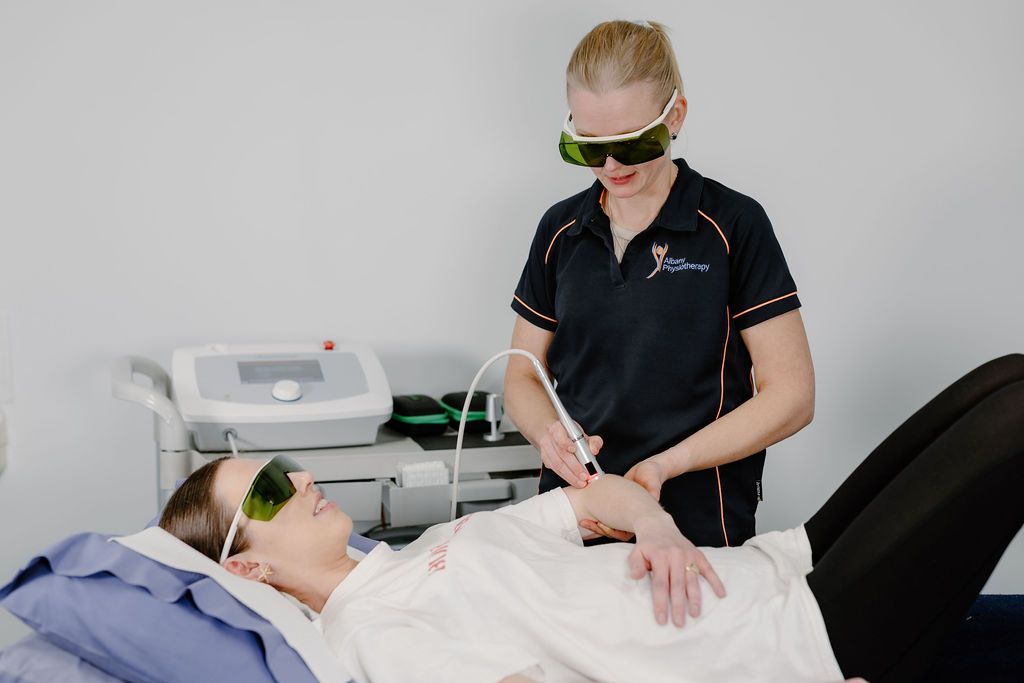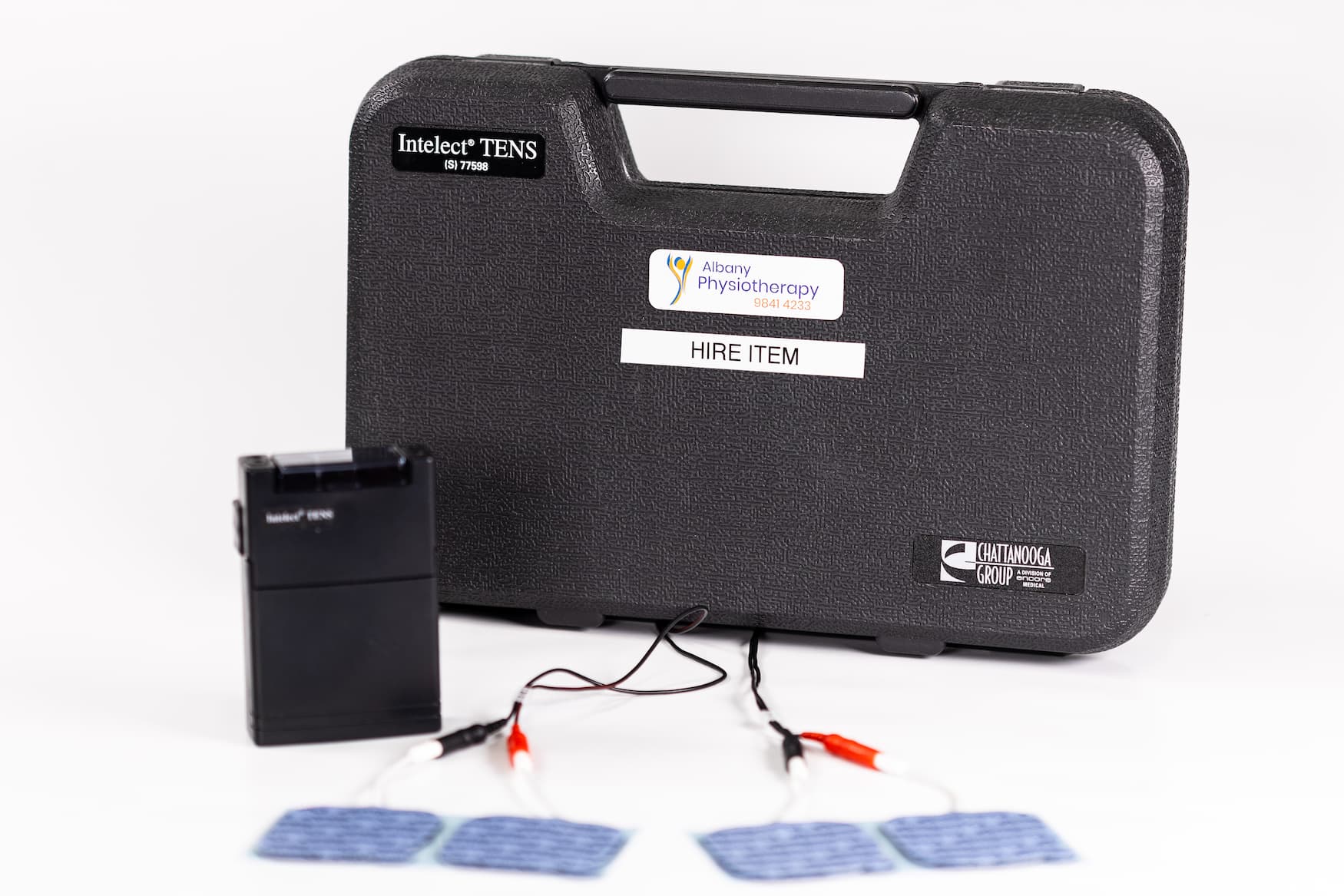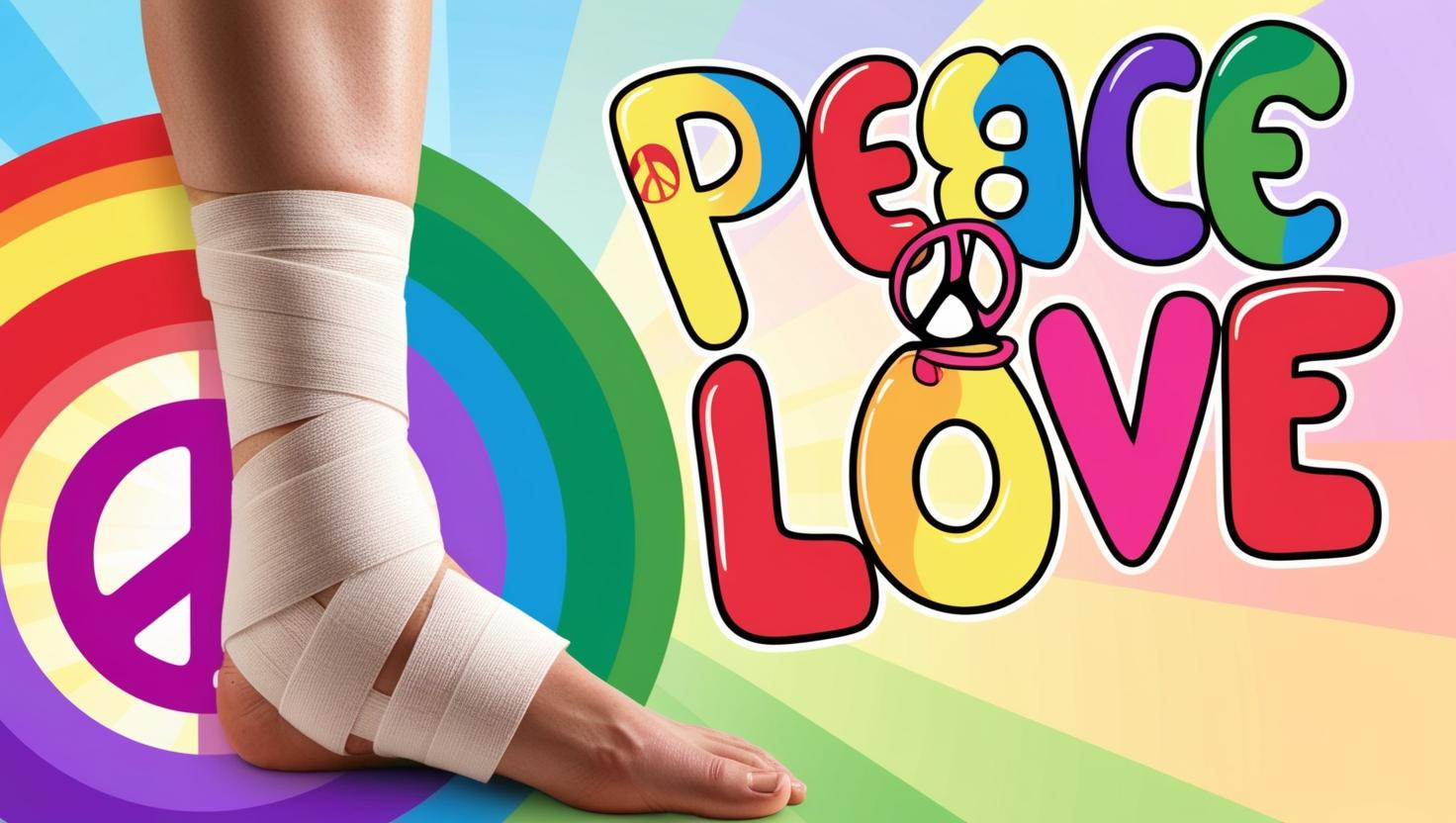While the hands are often the physiotherapist’s most valuable tool, sometimes advanced technology can take treatment to the next level. These tools may help speed up healing, relieve pain, and target tissues that exercise and manual therapy alone can’t always reach as efficiently.
By combining hands-on techniques with state-of-the-art devices, physiotherapists create comprehensive care plans that get you back on track faster and more effectively. Below is a short description of these additional services our physiotherapists are trained in.
High-Powered Laser Therapy
Our Grade 4 high-powered laser delivers light energy deep into tissues, stimulating cellular repair, reducing inflammation, and easing pain. This is especially useful for conditions like tendinopathy, plantar fasciitis, joint pain, and chronic inflammation. Many patients notice faster progress when laser therapy is added to their manual treatment plan.

Infrared Lamps
Infrared therapy provides gentle, penetrating heat that increases blood flow, relaxes tight muscles, and softens connective tissues. It’s often used before manual therapy to prepare tissues or afterwards to soothe sore, treated areas. It’s a simple, effective way to boost the effects of hands-on work.
TENS (Transcutaneous Electrical Nerve Stimulation) Units
TENS uses mild electrical pulses to stimulate nerves, blocking pain signals and encouraging the release of natural painkillers called endorphins. This can be especially useful for chronic low back pain, neck pain, and joint discomfort. TENS is non-invasive, safe, and often feels like a gentle tingling on the skin.
Dry Needling
Dry needling involves inserting fine needles into trigger points or tight muscle bands to release tension and improve blood flow. It is particularly helpful for chronic muscle tightness, stubborn trigger points, or conditions like tension headaches or myofascial pain syndrome. Patients often experience a noticeable “reset” in muscle function after dry needling.
Taping Techniques
Both rigid taping (for joint stabilisation) and elastic taping (like Kinesio tape) are used to support injured areas, reduce swelling, and guide optimal movement patterns. Taping can help athletes stay active during rehab or give painful joints extra support during daily activities.
Orthotics
Foot and gait issues can create ripple effects throughout the body. Orthotics help align the feet, improve weight distribution, and reduce stress on joints from the ankle up to the lower back. They’re especially useful for patients with plantar fasciitis, knee pain, or hip discomfort related to poor biomechanics.
Bracing – Support When You Need It Most
Braces can be a helpful short-term or activity-specific tool in managing pain, providing support, or aiding recovery from injury. It’s important to note that braces should never be a long-term substitute for movement or strengthening. When used appropriately and with guidance, they can enhance function and confidence during vulnerable stages of rehab. For further reading, we have a separate blog post on braces and supports.
The Power of Integration
What makes physiotherapy unique is not just the use of exercise prescription, our hands or technology, it’s how these elements are combined and tailored to the individual. A physiotherapist’s skill lies in knowing when to use which approach, how to layer treatments, and how to adapt care as your body responds.
Final Thoughts
When manual therapy and technology work together, the results are often greater than either could achieve alone. Whether you’re recovering from injury, managing chronic pain, or working to improve your mobility, this integrative approach offers the best of both worlds: the wisdom of human touch and the precision of modern science. Contact us today!



